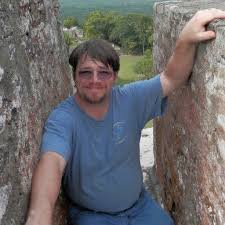Affiliation: Bronx Community College, City University of New York

Sheldon Skaggs is Associate Professor in the Department of Chemistry, Earth Science, and Environmental Science at Bronx Community College CUNY. His area of specialization is geoarchaeology, with a focus on ancient Maya archaeology:
“I received my Ph.D. in geoarchaeology from the University of Georgia (2010), and a BA in anthropology from the University of Washington (1995). My primary focus is on archaeological tools and finding the source materials used in making the artifacts. Additionally, along with excavations, I am responsible for site mapping and creating 3D models of the units and artifacts from Pacbitun, Belize. I have presented on geoarchaeology projects at DIG, SAA, and ISA conferences while also publishing in the Journal of Internet Archaeology, Journal of Archaeological Science, Journal of African Archaeology, and several archaeological texts. I am a cofounder and instructor for the RPA course on Advanced Metal Detecting for Archaeologists.”
The discovery of carved marble fragments with a Late Classic-to-Terminal Classic period (550–900 CE) elite burial in the center of a courtyard at the ancient Maya site of Pacbitun, Belize adds to the corpus of Ulúa Valley marble vases fragments found in the Maya lowlands. Confirmation of the vase’s origins by both style and stable carbon and oxygen isotope analysis shows that the likely source of production is the archaeological site of Travesia, in northwest Honduras. Additional residue analysis hints at the use and contents of these mysterious vases. In addition to the implications for trade and political connections between the archaeological sites in Belize and Honduras, the direct association of the vase fragments to a potentially desecrated burial highlights some interesting questions about local politics at Pacbitun, Belize. Artifacts from Pacbitun available after lecture as 3D printed replicas and shown in real time online modeling.
Short bibliography and/or website on lecture topic:
The Parker’s Revenge Archaeological Project surveyed 44 acres around the presumed location were the first militia forces fired upon in Lexington, MA on April 19th, 1775, faced off again with British forces retreating from Concord, MA. Project members were able to reconstruct the events and landscape of the 20-minute fight through metallic and geophysical surveys, 3-D laser scanning, and traditional excavations at Minute Man National Historical Park. Using the principles associated with battlefield archaeology, researchers recorded retrieved musket balls, both dropped and fired, to determine the true location of the combatants, and the intensity of the fighting.
Short bibliography and/or website on lecture topic:
www.nps.gov/articles/picturing-parkers-revenge-battle-site.htm
This lecture highlights geoarchaeology and archaeological science techniques used in a variety of archaeological contexts. Dr. Skaggs highlights the role of both chemical analysis in the laboratory, and principles of basic wave physics are used in modern archaeology. First, artifacts can be identified to the source of the raw materials through isotope analysis as illustrated through personal examples from Roman Tunisia and Ancient Maya site of Pacbitun Belize. Physics is used by understanding electric and magnetic field changes to find archaeology sites buried underground. Finally, the use of digital photography or lasers beamed through the trees to create three dimensional models of sites and artifacts and might represent the future of public outreach by archaeologists.